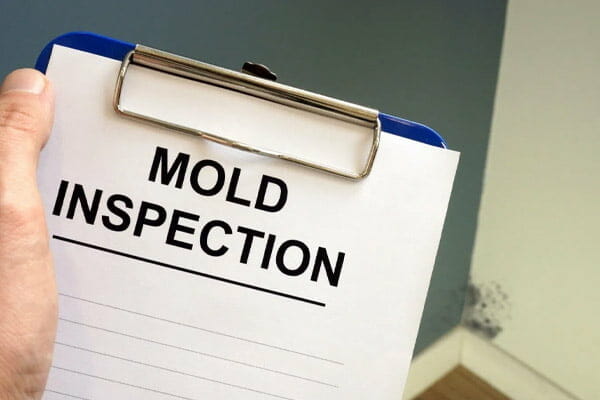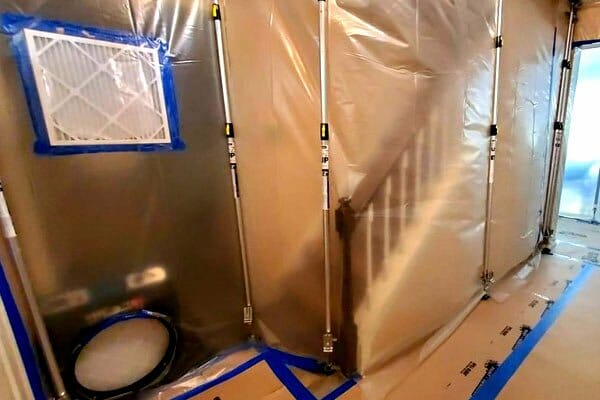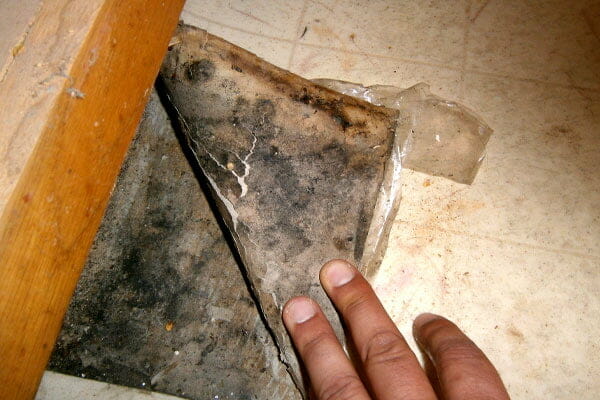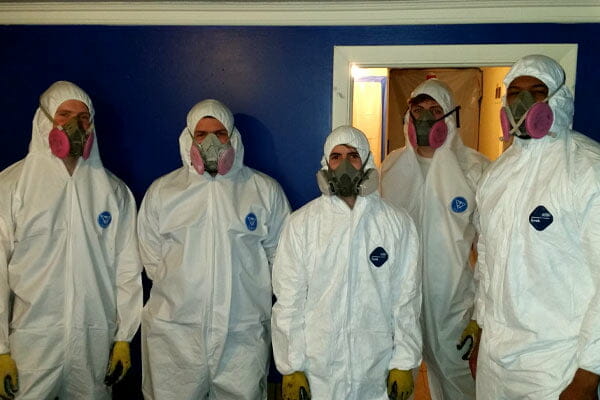Occupying a structure with significant mold concentrations can lead to severe health hazards for its inhabitants or employees, such as respiratory problems, allergic reactions, and potentially cancer from long-term exposure. By adopting mold remediation, a method involving specialized cleaning processes, it’s possible to significantly reduce or eliminate mold presence, thereby enhancing the safety and healthiness of the environment.
You will need to locate the mold, isolate the area being remediated, remove fabrics and clothing and cover everything else that remains in plastic so spores do not settle.
Below we take you through each step you need to take to prepare for mold remediation.
What we cover
TogglePreparing for Mold Remediation- Step by Step
Preparing for mold remediation requires careful planning to ensure that everything is set for the remediation team to do a perfect job. Here are more detailed instructions on what needs to be done in preparation for mold remediation:
Start with A Comprehensive Mold Insp

Okay, maybe you suspect that you may have a mold problem or can see it growing on some surfaces such as walls, inside humid crawl spaces, etc. Visual observation is one of the ways you can use to identify mold but a thorough inspection is necessary before remediation is scheduled. The inspection should ideally be conducted by a qualified mold expert or health expert and will help in the following ways:
Identifying Where the Mold Is Located
Sometimes you may have a lot of mold particles floating in the air but you cannot tell where it’s coming from. Keep in mind that some mold types could have tiny, virtually invisible pores contaminating furniture, countertops, walls, etc. A thorough inspection will reveal where the mold is located and how far it has spread.
Mold inspectors use a variety of techniques and tools such as infrared cameras, moisture detectors, and chemical swabs to identify different types of mold and their origin. At the end of the exercise, you will be able to isolate the areas that have mold so that the remediation crew can concentrate on them.
Checking for Mold Type
Knowing the type of mold in your house is an important step as it will help the remediation crew know what needs to be done and how to protect themselves. For instance, it’s important to know if you have toxic black mold in your house so that the cleanup crew can wear the right personal protective equipment and also use the most effective chemicals to eliminate it when they come over.
Professional inspectors can use special tools such as infrared cameras and also do chemical analysis on site to identify the type of mold on surfaces and in the air. This is all part of the preparation for mold remediation.
Conducting Air Quality Tests
Mold remediation involves reducing the amount of mold in a building -especially airborne mold particles to manageable levels. It’s therefore important that air quality tests are done to measure mold levels in the air so that the remediation company can know what needs to be done. A comprehensive air quality report indicating the type of mold, quantity in the air and other details will be prepared at the end of the inspection.
Note: You should ideally ask the company doing the remediation to do the inspection – if they can to make it easier for you and the remediation team. Most removal companies will offer to do a free inspection or offer one at a discount before they sign a contract to remove or remediate mold on your property. Use this as a selection criterion when searching for a mold remediation company.
Remove Clothing and Other Washable Items

Your next step after the inspection should be to remove clothing and other washable items such as curtains, tablecloths, shoes, containers from the affected areas. These items can be cleaned using the appropriate detergent and hot water if possible. Dry and put them in airtight containers so that they do not get contaminated again. You could also move them to a different unaffected room or shed until the remediation is completed.
You should, however, not try to remove or clean any permanent items such as furniture, picture frames, lampshades, and posters as they need to be cleaned and disinfected by the mold remediation crew. Also, avoid the temptation of cleaning the mold off surfaces using normal detergent and tools. Note that cleaning mold off surfaces will not prevent further growth and may not work for some mold types.
Isolate the Affected Area

This next step comes after the inspection and should be completed after you have removed the temporary items from the affected area for washing. If done properly, the mold inspection should yield a report indicating where the mold is so that you can isolate the area and protect your loved ones or occupants from further contamination. For instance, you should cordon off and lock the rooms or facilities where there is a significant mold in preparation for mold remediation. Affected crawl spaces should be covered or sealed off and marked so that the remediation crew can identify them easily.
Identify Mold Sources and Plan Repairs

Mold is mostly caused by excess humidity that could be a result of broken internal drainage, leaking roofs, damp hidden crevices, improperly fitted cabinets, hidden holes, etc. As part of the pre-remediation inspection, you should identify the origins and plan on how they can be fixed after the remediation to prevent future mold encounters.
Do not schedule the repairs before the remediation has been done as this might put the repairmen in danger. Instead, you should make a note of the required fixes as advised by the mold inspector and start looking for a repair company to do the repairs after the remediation has been completed and the house marked as mold-free.
Take Pictures or Document the Status of Your Property

As the penultimate step in preparing for mold remediation, it’s important that you document the status of your house before the remediation company takes over. You can do this by taking pictures of the areas they will be working in and making notes of any damages that exist before the remediation. This will help you later if, by any chance, the remediation team causes some damage that needs compensation as they do their work.
Give the Remediation Team Room to Work

This last step could be optional depending on the work to be done and the type of mold being removed or remediated. You should ideally give the remediation company enough room to work by moving your loved ones elsewhere temporarily. You could also schedule the remediation at a time when there is no one in the house.
FAQ's
How Long Does Mold Remediation Take?
Mold remediation usually takes between a day to a week depending on the amount of mold being remediated, the size of your home, type of mold, where the mold is growing, and other factors. For instance, it could take a day to complete remediation in a standard residential bungalow with a mild non-toxic mold problem.
Can I DIY Mold Remediation or Should I Use A Pro?
It’s not advisable to do DIY remediation, especially if you are dealing with toxic black mold or haven’t had a mold inspection done. Cleaning or wiping mold off using normal tools or detergents is not effective and could be dangerous depending on the type of mold. Trained and certified mold pros will ensure that the mold is properly remediated and that future growth is prevented. They also know what they need to wear during the remediation to be safe from contamination.
Is It Safe to Live in A Home After Mold Remediation?
Yes, it is safe to live in a home after the remediation has been completed and the house is given a clean bill of health by the remediation company. The house will be safe for occupation within a day or two after the remediation has been completed. Good mold removal companies will do a post-remediation inspection to ascertain that the house is safe for occupation.
Do Mold Bombs Really Work?
Mold bombs or foggers may help eliminate visible mold on walls and other surfaces but will not eliminate the mold. Visible mold is usually a sign of an even bigger problem and it takes professional remediation to get rid of all the mold in hidden places like behind drywall, inside ceilings, and crawl spaces. Mold bombs should be used as one of the solutions to eliminate excess mold but not exclusively.
Are There Any Mold Remediation Standards?
There are currently no federal mold remediation standards although different organizations such as the NIH, EPA, National Organization of Remediators and Mold Inspectors (NORMI), and others have come up with various guidelines that private companies can adopt.














